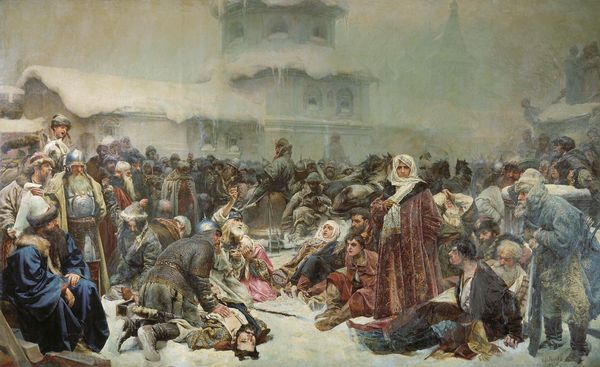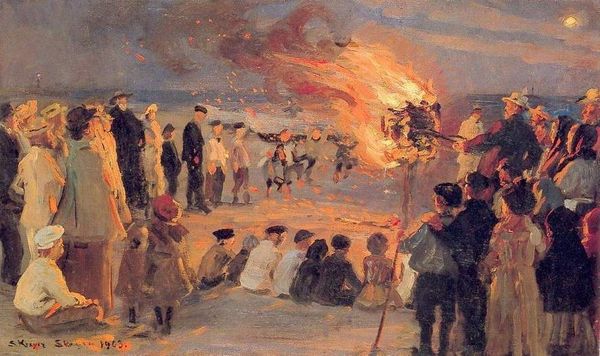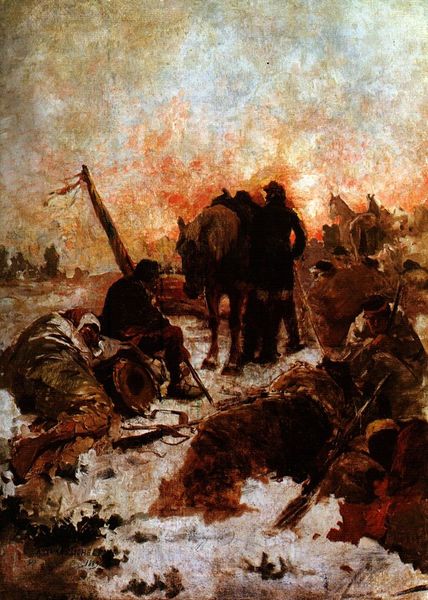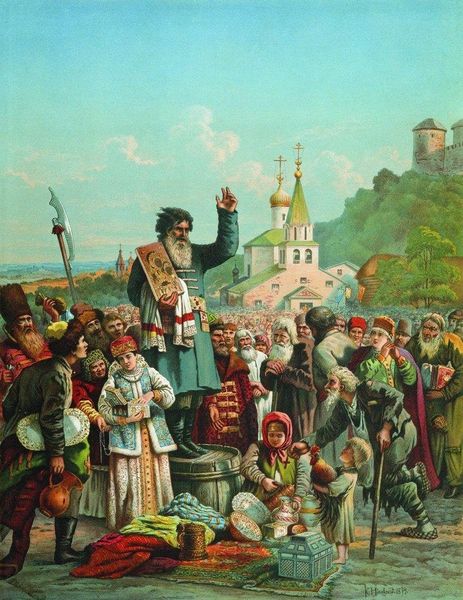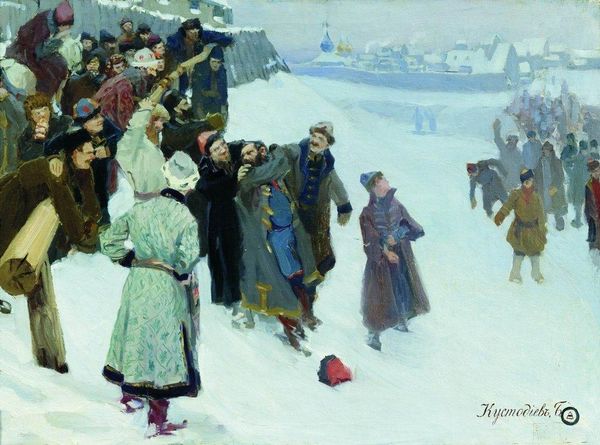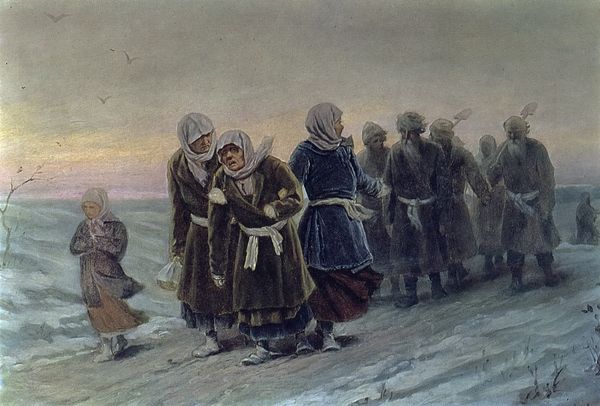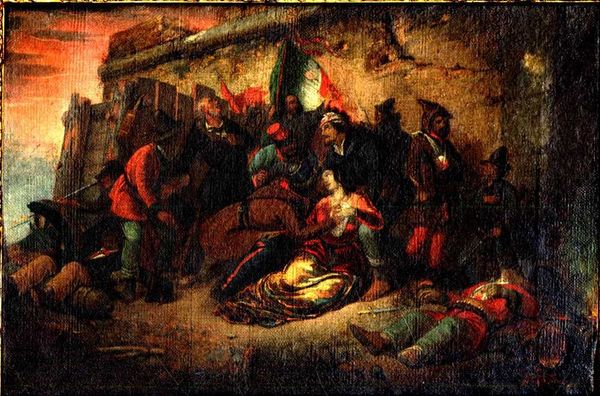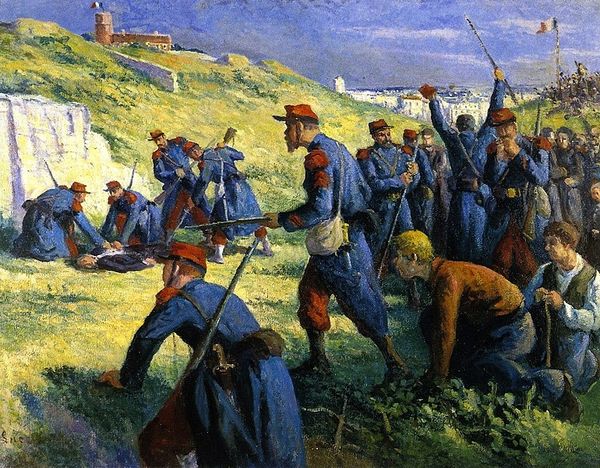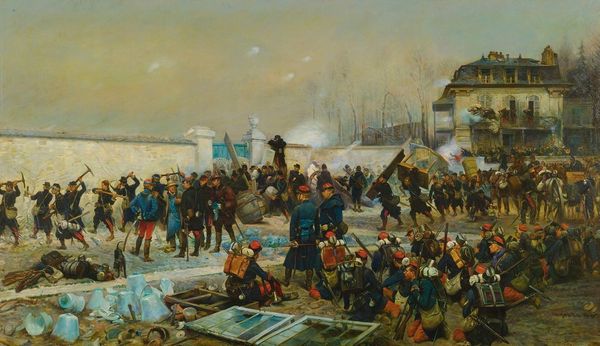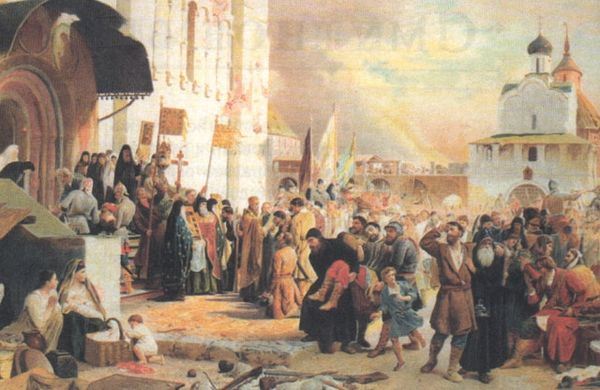
painting, oil-paint
#
painting
#
oil-paint
#
painted
#
figuration
#
oil painting
#
russian-avant-garde
#
genre-painting
#
history-painting
#
realism
Dimensions: 67.5 x 103.5 cm
Copyright: Public domain
Grigoriy Myasoyedov painted 'The Burning of Archpriest Avvakum' in oils in an unknown year. It depicts a pivotal moment in Russian religious history. The painting portrays the execution of Avvakum, a leader of the Old Believers, who resisted the liturgical reforms of the Russian Orthodox Church in the 17th century. Myasoyedov highlights the conflict between religious conservatism and reformist policies, reflecting broader socio-political tensions within Russia. The image uses the visual codes of martyrdom, contrasting Avvakum's defiance with the state's brutal suppression. Made in Russia, the artwork is a commentary on the social structures of its own time, but looks back at the divisive church reforms enacted by Patriarch Nikon in 1653, which split Russian society. Myasoyedov was part of the Peredvizhniki movement, a group of Russian realist artists who challenged the academic art establishment and sought to depict the lives and struggles of ordinary people. To understand this artwork better, historians would consult religious texts, historical documents, and social histories to gain a deeper appreciation of the institutional context. The meaning of this painting is contingent on social and institutional contexts.
Comments
No comments
Be the first to comment and join the conversation on the ultimate creative platform.
